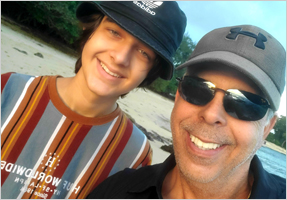
Optimizing the Lifetime of High-Flex Cables
Original Content Written by: AlphaWire
High-flex cables can often be damaged, or corkscrewed, if components in a cable track system are not installed correctly. Learn how to address cable longevity.
Given the cost premium of high-flex cables, the appropriate care should be given to the nuances of how cables should be handled and installed in the cable track (C-Track, Drag Chain etc.). Information on this is readily available on the internet from numerous sources that all generally agree in sum and substance.
Yet once or twice a year we’ll receive an exceedingly damaged (generally corkscrewed) cable back for examination. Occasionally we learn something that we can use to improve our designs, but way more
often than not, what we find is that there has been improper dress-out of the cable on the machine.
Rather than rehash all the basic considerations, this whitepaper will focus on the most common root causes for premature cable failure.
What is corkscrewing and what causes it?
A cable is said to have corkscrewed when through handling or repeated motion alters its appearance from nominally straight to quite undulated, looking something like a traditional corkscrew.
The cause of the corkscrewed appearance is due to the shifting or migration of conductors from their original position to a new position, thus causing other elements to be displaced and resulting in the corkscrew appearance.

Figure 1: Cables that have the corkscrew condition
Per Figure 1, the top cable shows a significant corkscrewing condition while the bottom cable has just started to corkscrew.
Don’t underestimate the Quiet Zone
Secondly, the quiet zone is a length of cable as it exits the cable tray where the cable is supported and can keep free from turns and small radius bends.
It’s widely understood that when a multi-conductor cable is bent in a 180 degree angle, the conductors located at the inside of the bend radius will be under compression (i.e. getting shorter) and the conductors at the outside of the bend radius will be under expansion (i.e. getting longer).
Now consider these forces of compression and expansion in a dynamic environment where they are traveling back and forth down the cable as the cable is under rolling flex. What many don’t realize is that these forces are not as localized at the bend site.
These forces are easily capable of traveling several feet. A problem occurs when the forces traveling a certain direction meet with a restriction that stops the natural propagation of the forces and they are then reflected back in the opposite direction. Clamps, connectors, bends can all cause such restrictions.
Think about dropping a small pebble in the center of a large pool. A small wave will form and ripple in all directions. If the pebble is small enough and the pool big enough, the waves will have completely dissipated before reaching the sides. Now take that same pebble to a kitchen sink and drop it.
The resultant waves will travel to the sides of the sink and be reflected in the opposite direction. The former case is the purpose of the quiet zone. We want the forces to be naturally attenuated by the structure of the cable before reaching a restriction.
Now remember that we are not really talking about a single event. In most tracks they are repeatedly cycled back and forth giving the possibility that the forces may be additive at any given point.
In such a case, one or more of the conductors, given all these forces, generates excess length. These conductors will take the excess length and try to move outward and the now shorter conductors will then try to become the new neutral axis of the cable.
When this happens corkscrewing starts and will get worse with each successive flex cycle. So how long should a quiet zone be? Here’s where you might get different answers from people. You can find values of quiet zone length should be at least 15 times the cable OD to 50 times.
In truth, there is no good single value that would be optimal for every installation scenario. There are several factors to consider such as the number of conductors, AWG size, shielding, and length of the cable.
In short, the heavier, more complex a cable is, the longer the quiet zone needs to be. Especially for longer tracks, avoid cables with more than 2 cabling layers.
A run of three-30 conductor cables is far more installation forgiving than two-45 conductor cables. Conversely, for low conductor count cables, one can gravitate to a shorter quiet zone.
Learn more about the different types of flexible cables to fit your application.
Be respectful of bend radius specifications
Cable bends, especially tight bends, can cause a restriction in the cables ability to allow stresses to equalize forces. It is not uncommon for someone to consider how to route and dress out a cable to reach a point of recognition in order to meet the cable bend radius (and quiet zone) specifications.
The temptation is to see these specifications as “soft specs” and make a compromise. All too often this can lead to a premature cable failure.
What can seem like a good tradeoff in making the installation cheaper and easier, can result in machine downtime from cable failure where the cost of the downtime and replacement cable assemblies far outweighs the added cost to “do it right”.
If necessary, consider service loops and/or cable supports to dress out the cable on the machine so it meets all installation specifications. Understand that the cable is only one piece of a complex system
Often overlooked are the roles that connectors and clamps can have on the performance of a cable track system.
When preparing the cable for connector termination, will the conductors be all cut to the same length or will the length of each be tailored based on where it will be positioned in the connectors (or worse yet, have no standard work established so different operators are doing termination differently from one another)?
Is the cable being clamped in such a way that the round geometry of the cable core is being distorted? The point here being is that when a cable fails, it’s quite common to focus on just the cable and ignore the other aspects of the system.
The reality is that all the components in a cable track system must be correctly designed and installed for it to operate reliably for a long time. So remember, take the necessary steps to ensure your cables maintain longevity and don’t skip so short cuts in order to cut costs.
We are a proud distributor of Alpha Wire products. Reach out to us with questions around cable failure prevention and maintaining cable longevity. Check out our connectors and clamps that may be right for your cable track system.













